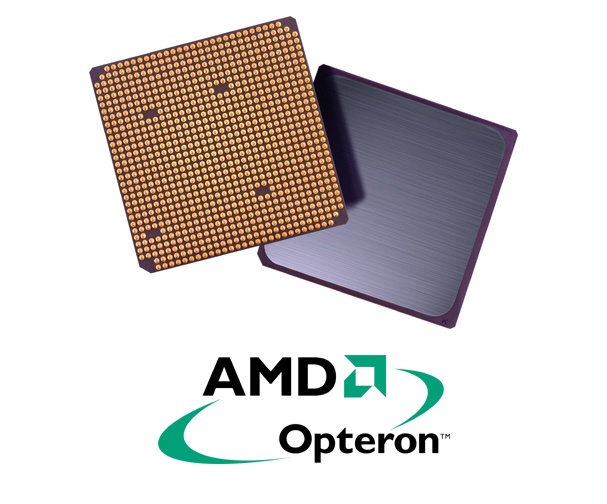AMD: No 'Bulldozer' Anytime Soon
AMD's senior vice president and chief marketing officer Nigel Dessau said in a blog post that the next-generation Bulldozer architecture will not be available any time soon.
The funny thing about Nigel Dessau's post is that he actually has an interview with himself. In some ways, it seems like some kind of April Fool's joke, but on the other hand, an online prank just doesn't seem like the proper business-like thing to do, especially for huge corporations such as Intel and AMD. No, Dessau decided to have a Q &A session with himself to answer a bunch of questions that have recently come his way, especially in light of Intel's recent release of the Nehalem processor.
However, rather than talk about upcoming AMD products, Dessau begins the blog post talking about flattery, that Intel's Nehalem (or "Opti-clone" as he calls it) is merely a replica of the AMD Opteron processor. He even goes on to quote a statement made by Intel's Patrick Gelsinger found an article published in The Wall Street Corner, a statement that Intel's Xeon processor 5500 series is the foundation for the next decade of innovation. "Well, I almost agree with that," Dessau concurred in his blog. "After nearly six years of telling customers that the AMD Opteron processor architecture was the wrong answer, this week our competitor has finally delivered “Nehalem” ― which some might call a copy, at least as far as the architecture is concerned."
Thus, he begins his self-interrogation with the following:
Interviewer:
Wow, you people must be really scared.
Me:
Nope.
Interviewer:
Nope? Ok, how about really, really scared?
Get Tom's Hardware's best news and in-depth reviews, straight to your inbox.
Me:
Nope. Nope. No, really we’re not.
He goes on to explain the reasons why AMD feels so secure: the company has been in this boat before. Over the last ten years, both Intel and AMD have traded performance leadership between each other as if passing the Olympic flame--around six times in fact. As recently as 2006, Intel made similar claims as the latest quotation yanked from the Wall Street journal. "We heard some of these same statements from Intel then, about an eighty percent performance advantage and never losing another benchmark to AMD again with “Woodcrest.” That gap closed quickly," he said.
Interestingly enough, he brings up a good point in the blog: more than 90 percent of what AMD sells is not its fastest part. Dessau said that the market for the fastest part is always small, and especially small now during a plummeting economy. Although Intel may leapfrog in raw performance with the overhaul of their server architecture, Dessau said that Intel is also introducing an new learning curve and resource drain for an already cost-sensitive and "disruption-averse" IT environment. Current consumers want value, consolidation, and ways to save money. "With all of our competitor’s talk about memory bandwidth, they have ignored the market that cares the most about having a large memory footprint ― the 4P market," he said.
By the end of the blog, Dessau moved on to talk about the 6-core "Istanbul" processor, which is apparently on track for launch in the second half of 2009; Istanbul will be compatible with existing OEM platforms. Then in 2010, AMD will introduce the next-generation "Maranello" platform that will feature the 12-core "Magny-Cours" processor. "Maranello" will also serve as the platform for the "Bulldozer" architecture slated to debut in 2011.
"Nice job Intel, but value for money is what’s key in this market," Dessau concluded.

Kevin Parrish has over a decade of experience as a writer, editor, and product tester. His work focused on computer hardware, networking equipment, smartphones, tablets, gaming consoles, and other internet-connected devices. His work has appeared in Tom's Hardware, Tom's Guide, Maximum PC, Digital Trends, Android Authority, How-To Geek, Lifewire, and others.
-
thedipper He makes a good point, except for the fact that Intel is the average mindless consumer's primary knowledge. Some people buying systems have no idea what AMD is, so even though Intel's non-enthusiast CPUs are worse per dollar, they're more likely to get bought.Reply -
Ambictus thedipperHe makes a good point, except for the fact that Intel is the average mindless consumer's primary knowledge. Some people buying systems have no idea what AMD is, so even though Intel's non-enthusiast CPUs are worse per dollar, they're more likely to get bought.Reply
I disagree... the "mindless consumer" is going to head to your local Best Buy or other big box retailer to get their computer. So ultimately it's up to the OEMs to determine what the consumer purchases. Which in a performance per dollar aspect may just be an AMD. -
oicw Agreeded. While overclocking an i7 or E8400 to 4+ Ghz is impressive, it's just about useless to the average Joe computer shopper. Any AthlonX2 processor in a quiet and cool-looking case should suffice.Reply
What AMD really needs is to create brand awareness, like Apple. Make it somehow "cool and fashionable" to walk down the street with an AMD powered laptop, or a bunch of creative yound college students sitting around an AMD PhenomII desktop in their dorm, or a smart engineer working around an Opteron workstation, etc.
Of course, that's easy to say, but unless an asteroid with $10B of marketing budget magically (and softly) lands besides AMD's headquarters, grand-scale advertising is pretty hard to achieve for a cash-strapped company. -
megamanx00 Very true indeed. Kind of ashame that Bulldozer won't come as early as previously promised. I just hope it isn't due simply to management decisions, like the previous decision to delay 65nm parts just to sell more 90nm parts. That delay was a big contributing factor to the original Phenom Launch debacle.Reply -
jrnyfan Intel might be able to say they have the uber l33t pwnzrz when it comes to the processing crown but my X2 4200+ @ 2.5GHz runs all of my games and applications just fine. I don't have a reason to pay for bleeding edge, that was a fascination for all of 6 months when I had an arms race with a buddy and it turns out I won with my GPU, not my proc.Reply
Bleeding edge doesn't make the money in the end, it's nice to hang your hat on but most people want performance/$ and that is where AMD shines again and again. -
Not one intel and nvidia fanboy saying that AMD loses at everything? What happened to Tomshardware?Reply
-
Very good article, I love the fact that AMD is catching ground again against Intel, I build many custom PC,S for customers and have noticed the price creep for the cheaper Intel CPU'S and Motherboards, It seems here in the uk most of the cheaper great overclockers have disapeeared such as the 7200 and the prices have gone up not down, But with the AMD Phenom II X3 and X4 you can match these to a cheaper board and they go like stink, recently made a X3 setup and it by far outstripped my 7200 at default clock and overclocked, Go AMD go, and lets see intel bring the price down a little for their fantastic chips All in all we all win as consumersReply
-
haricotvert The title of this article is terribly misleading. There is a single mention of the Bulldozer core being slated for a 2011 release... and for that you make it the title of the article? The post is about Opterons vs. Nehalem... talk about missing the forest for the trees.Reply
Here's my suggestion for a title: "AMD Unconcerned by Nehalem Release." Short, to the point, and most importantly accurate. Really, whoever edited this article and let it go live with that title should recheck their journalistic integrity.
